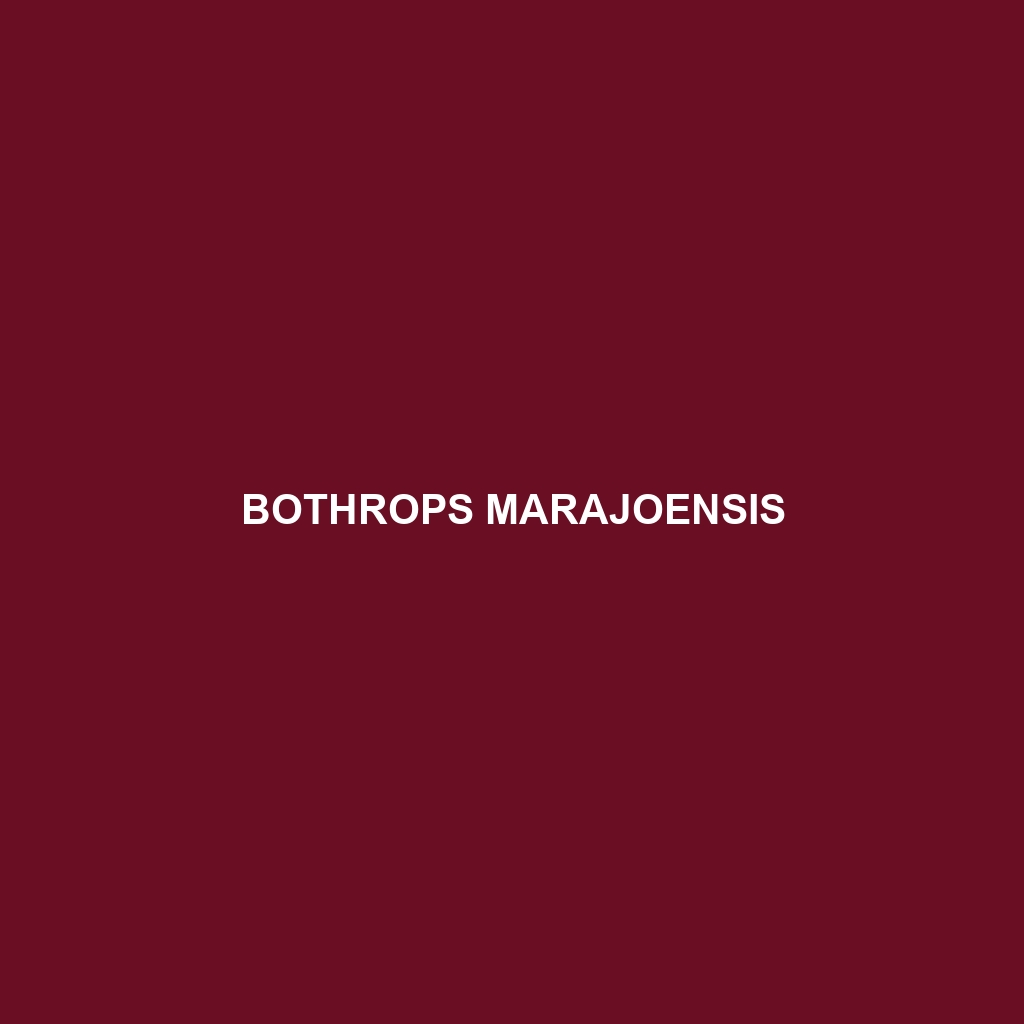Species Description: Bothrops marajoensis
Common Name: Bothrops marajoensis
Scientific Name: Bothrops marajoensis
Habitat
Bothrops marajoensis, commonly known as the Marajó lancehead, primarily inhabits the tropical rainforests of Marajó Island, located in the Amazon River delta in Brazil. This species thrives in moist, humid environments often characterized by dense vegetation, swampy areas, and the banks of rivers and streams. Its habitat is crucial for its survival, offering ample cover and humidity.
Physical Characteristics
Measuring between 1 to 1.5 meters in length, Bothrops marajoensis exhibits a robust, stout body typical of the Bothrops genus. The coloration includes various shades of brown and olive, often adorned with intricate patterns of darker bands and spots, making it well-camouflaged against the forest floor. The species is notable for its triangular-shaped head and elongated fangs, which are adapted for its feeding habits.
Behavior
This snake is primarily nocturnal, displaying heightened activity during twilight and nighttime hours. It is known for its ambush hunting strategy, often remaining motionless while waiting for prey to approach. Bothrops marajoensis is territorial and can be aggressive when threatened, using its potent venom for defense and subduing prey.
Diet
The diet of Bothrops marajoensis consists primarily of small mammals, birds, and amphibians. It employs a sit-and-wait method to capture unsuspecting prey, relying on its exceptional camouflage to blend into the surroundings. Due to its potent venom, the snake effectively immobilizes its prey before consumption.
Reproduction
Bothrops marajoensis is ovoviviparous, meaning that females give birth to live young rather than laying eggs. The breeding season typically occurs during the wetter months of the year, coinciding with the peak of prey availability. After a gestation period of approximately six to eight months, females can give birth to 10-20 young, which are fully independent upon birth.
Conservation Status
The conservation status of Bothrops marajoensis is categorized as Vulnerable due to habitat destruction and environmental changes affecting its rainforest ecosystem. Efforts are being made to protect its natural habitat and raise awareness about the importance of biodiversity in the region.
Interesting Facts
Bothrops marajoensis is a unique species within the Bothrops genus, exhibiting distinct coloration and behavioral traits. Due to its limited geographic range and distinctive patterns, it has garnered the attention of herpetologists and conservationists alike, making it a subject of interest in snake research.
Role in Ecosystem
As a predator, Bothrops marajoensis plays a vital role in controlling the populations of small mammals and birds, contributing to the balance of its ecosystem. Its presence indicates a healthy environment, as it relies on a rich biodiversity of prey species. Additionally, it is part of the food web, providing sustenance for larger predators in its habitat.
